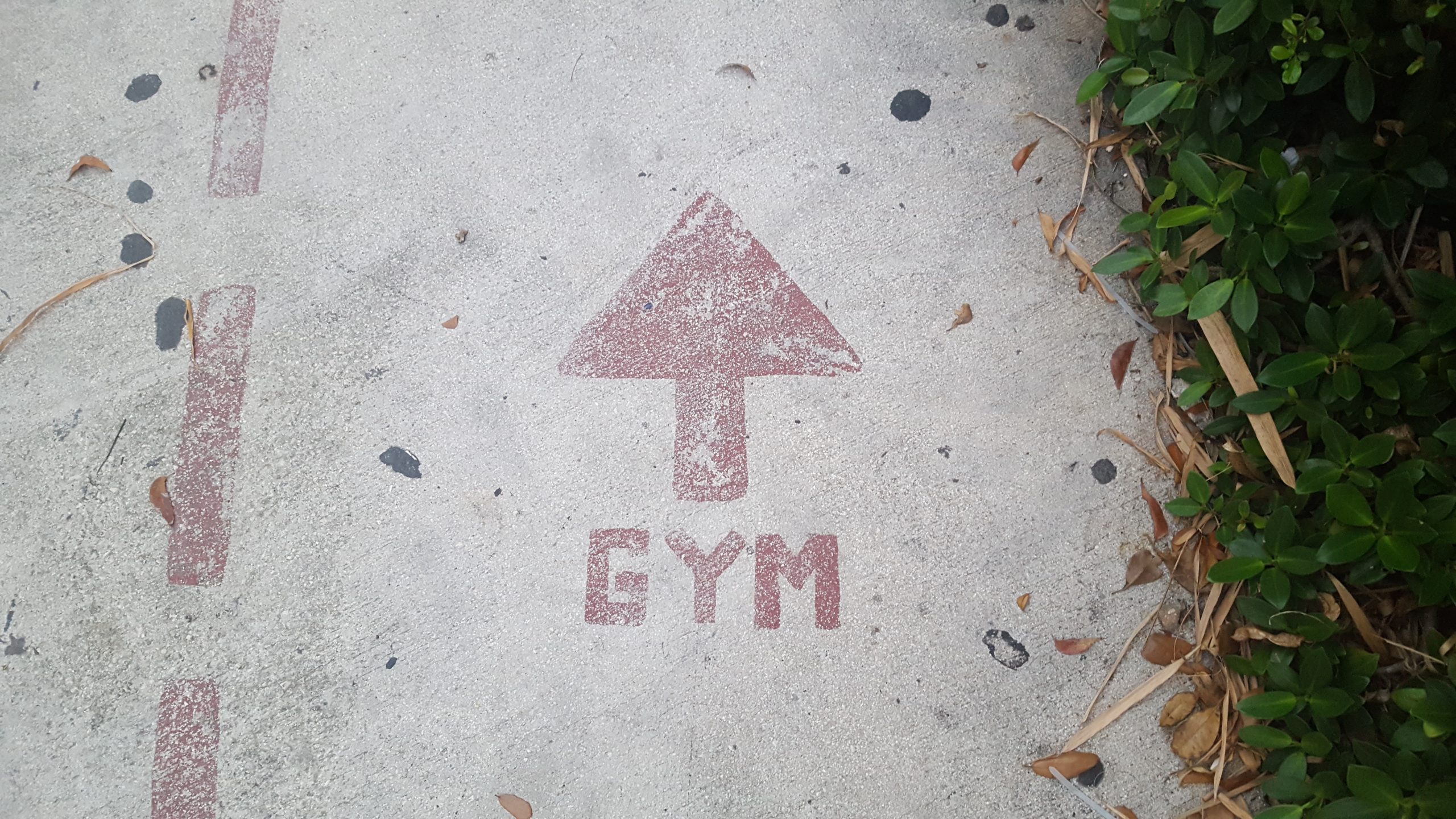Dominate Your Workout: Essential Equipment for Functional Strength Training
Table of Contents
Functional Strength Training Basics
If you’re looking to improve your overall fitness and enhance your performance in daily activities, functional strength training is an excellent approach to consider. This type of training focuses on movements that mimic real-life activities, helping you build strength, stability, and mobility for everyday tasks. Let’s delve into what functional strength training is and the benefits it offers.
What is Functional Strength Training?
Functional strength training is a form of exercise that emphasizes movements that are practical and applicable to daily life. Unlike traditional weightlifting routines that often isolate specific muscle groups, functional strength training targets multiple muscle groups and joints simultaneously. This approach helps you develop strength, balance, coordination, and flexibility that directly translate into improved performance in everyday activities.
Functional strength training exercises often involve movements such as pushing, pulling, squatting, bending, twisting, and lunging. These exercises can be performed using various types of equipment or just your body weight. By engaging multiple muscle groups and challenging your body in different planes of motion, functional strength training helps you develop functional fitness that supports your daily movements and reduces the risk of injury.
To learn more about specific exercises you can incorporate into your functional strength training routine, check out our article on functional strength training exercises.
Benefits of Functional Strength Training
Embracing functional strength training can bring a multitude of benefits to your fitness journey. Here are some key advantages of incorporating functional strength training into your workout routine:
- Improved overall strength: Functional strength training targets the muscles and movements you use in your daily life, helping you build strength that directly translates into improved performance in various activities.
- Enhanced stability and balance: By engaging your core muscles and challenging your body’s balance, functional strength training improves your stability and balance, reducing the risk of falls and injuries.
- Increased flexibility and mobility: Functional strength training involves dynamic, multi-joint movements that enhance your range of motion and joint mobility. This increased flexibility can improve your posture and help you move more freely in your daily activities.
- Efficiency in daily tasks: Functional strength training improves your ability to perform everyday tasks with ease. Whether it’s carrying groceries, lifting objects, or playing with your kids, the functional strength you develop will make these activities feel easier and more manageable.
- Weight management: Functional strength training can contribute to weight management by increasing your muscle mass and boosting your metabolism. As you build lean muscle, your body becomes more efficient at burning calories, even at rest.
To explore more about the benefits of functional strength training, check out our article on functional strength training workouts.
By incorporating functional strength training into your fitness routine, you can enhance your overall physical capabilities and improve your quality of life. Whether you’re a beginner or an advanced exerciser, functional strength training offers a versatile and effective way to achieve your fitness goals.
Essential Equipment for Functional Strength Training
To effectively engage in functional strength training, it’s important to have the right equipment that targets multiple muscle groups and enhances overall performance. Here are some essential pieces of equipment commonly used in functional strength training:
Resistance Bands
Resistance bands are versatile and portable tools that come in different levels of resistance. They allow you to perform a wide range of exercises, such as bicep curls, squats, and lateral walks. These bands provide constant tension throughout the movements, challenging your muscles and improving strength. Resistance bands are especially beneficial for individuals looking to increase stability and flexibility.
Kettlebells
Kettlebells are weighted balls with handles that offer a unique and dynamic workout experience. They provide a combination of strength training and cardiovascular benefits. Kettlebell exercises, such as swings, snatches, and Turkish get-ups, engage multiple muscle groups at once, promoting functional strength and power. The uneven weight distribution of kettlebells also requires you to stabilize your body, enhancing core strength and balance.
Medicine Balls
Medicine balls are weighted balls that come in various sizes and weights. They are excellent tools for developing core strength, power, and coordination. Medicine ball exercises, including wall balls, Russian twists, and slam ball throws, challenge your muscles in dynamic ways. These exercises mimic real-life movements, making them highly functional for daily activities and sports performance.
Suspension Trainers
Suspension trainers, such as TRX, consist of adjustable straps that leverage your body weight for resistance training. By using your own body as the resistance, suspension trainers engage multiple muscle groups simultaneously. They are especially effective for developing strength, stability, and flexibility. With suspension trainers, you can perform exercises like rows, push-ups, lunges, and planks.
Dumbbells
Dumbbells are classic strength training tools that are widely available and versatile. They offer a wide range of exercises to target different muscle groups. From bicep curls and shoulder presses to lunges and squats, dumbbells can be used for various functional movements. They allow for unilateral training, which helps to correct muscle imbalances and enhance overall stability.
Plyo Boxes
Plyo boxes are sturdy platforms of different heights that are used for explosive movements and plyometric exercises. These exercises, such as box jumps, step-ups, and lateral jumps, improve power, speed, and agility. Plyo boxes challenge your muscles by forcing them to generate maximum force in a short amount of time. They are especially beneficial for athletes and individuals looking to enhance their athletic performance.
Battle Ropes
Battle ropes are thick, heavy ropes that are anchored to a point and used for high-intensity, full-body workouts. By creating waves, slams, and other dynamic movements, battle rope exercises engage your upper body, core, and lower body simultaneously. These exercises build strength, endurance, and cardiovascular fitness. Battle ropes are a great option for those looking to add variety and intensity to their functional strength training routine.
Agility Ladder
An agility ladder is a ladder-shaped tool laid out on the ground to improve footwork, speed, and agility. By performing quick and precise movements through the ladder rungs, you can enhance coordination, balance, and overall body control. Agility ladder exercises are highly beneficial for athletes and individuals involved in sports that require quick changes in direction and agility.
Incorporating these essential pieces of equipment into your functional strength training routine can help you target various muscle groups, improve overall strength, and enhance your performance in daily activities and sports. Remember to choose equipment that suits your fitness goals, preferences, and level of experience. For more ideas on functional strength training exercises, check out our article on functional strength training exercises.
How to Choose the Right Equipment
When it comes to functional strength training, selecting the right equipment is essential to maximize your workout effectiveness. With a wide range of options available, it’s important to consider various factors before making your choices. Here are some considerations for equipment selection and budget-friendly alternatives to help you make informed decisions.
Considerations for Equipment Selection
When choosing equipment for functional strength training, it’s important to consider the following factors:
- Fitness Goals: Determine your specific fitness goals to understand which equipment will best support your needs. For example, if you’re focusing on improving upper body strength, resistance bands or dumbbells might be suitable choices.
- Available Space: Consider the space you have available for your workouts. If you have limited space, compact and versatile equipment like resistance bands or suspension trainers can be excellent options.
- Exercise Variety: Look for equipment that allows you to perform a wide range of exercises. Versatility is key in functional strength training, so equipment like kettlebells or medicine balls that can be used for multiple movements are highly beneficial.
- Skill Level: Consider your current fitness level and experience with functional strength training. Some equipment, like plyo boxes or battle ropes, may require more advanced skills and strength. Start with equipment that matches your current capabilities and gradually progress to more challenging options.
- Budget: Set a budget for your equipment purchases. While some equipment can be costly, there are also budget-friendly alternatives available that can provide similar benefits. We’ll explore these alternatives in the next section.
By taking these considerations into account, you can choose equipment that aligns with your goals, space, versatility, skill level, and budget.
Budget-Friendly Alternatives
If you’re working with a limited budget, there are cost-effective alternatives to consider:
| Equipment | Budget-Friendly Alternative |
|---|---|
| Resistance Bands | Tubing with handles or mini bands |
| Kettlebells | Water bottles or dumbbells |
| Medicine Balls | Sandbags or weighted backpacks |
| Suspension Trainers | TRX-style homemade straps or gymnastic rings |
| Dumbbells | Water jugs or canned goods |
| Plyo Boxes | Sturdy step or platform |
| Battle Ropes | Towels or jump ropes |
| Agility Ladder | Masking tape or chalk lines |
These alternatives can serve as temporary solutions until you’re ready to invest in specific equipment. Just be sure to adapt your exercises accordingly to ensure safety and effectiveness.
Remember, the most important aspect of functional strength training is performing exercises that engage multiple muscle groups and mimic real-life movements. The equipment you choose should support this principle and help you achieve your fitness goals. For inspiration on exercises to incorporate into your training routine, check out our article on functional strength training exercises.
By carefully considering your needs and exploring affordable alternatives, you can create an effective functional strength training routine without breaking the bank.
Designing Your Functional Strength Training Routine
Once you have gathered the essential equipment for functional strength training, it’s time to design an effective routine that incorporates these tools. By incorporating equipment into your workouts, you can target specific muscle groups, improve your overall strength, and enhance your functional fitness. Here are some tips for designing your functional strength training routine.
Incorporating Equipment into Your Workouts
To make the most of your functional strength training equipment, it’s important to incorporate it strategically into your workouts. Here are a few ideas to help you get started:
- Circuit Training: Create a circuit-style workout where you move from one exercise to the next, utilizing different pieces of equipment. For example, you could start with resistance band rows, then move to kettlebell swings, followed by medicine ball slams, and finish off with a suspension trainer push-up.
- Supersetting: Pair two exercises together, one using equipment and the other bodyweight-based. Alternate between the two exercises with minimal rest in between. For instance, you could superset dumbbell lunges with plyo box jumps or battle rope waves with agility ladder drills.
- Progressive Overload: Gradually increase the resistance or intensity of your exercises as you become stronger. This could involve using heavier kettlebells, increasing the difficulty of your plyometric movements, or adding more resistance bands to your exercises.
Remember to focus on proper form and technique to ensure that you are performing the exercises correctly and safely. For a variety of functional strength training exercises, check out our article on functional strength training exercises.
Sample Functional Strength Training Circuit
To give you an idea of how to structure your functional strength training routine, here’s a sample circuit that incorporates different equipment:
| Exercise | Equipment | Reps | Sets |
|---|---|---|---|
| Resistance Band Rows | Resistance Bands | 12-15 | 3 |
| Kettlebell Swings | Kettlebells | 15-20 | 3 |
| Medicine Ball Slams | Medicine Balls | 10-12 | 3 |
| Suspension Trainer Push-ups | Suspension Trainer | 8-10 | 3 |
| Dumbbell Lunges | Dumbbells | 10-12 per leg | 3 |
| Plyo Box Jumps | Plyo Boxes | 8-10 | 3 |
| Battle Rope Waves | Battle Ropes | 20-30 seconds | 3 |
| Agility Ladder Drills | Agility Ladder | 2-3 rounds | 3 |
Perform each exercise in the circuit back-to-back with minimal rest in between. Once you complete all the exercises, rest for 1-2 minutes, then repeat the circuit for a total of 3 sets. Adjust the reps, sets, and rest time according to your fitness level and goals.
Remember, this is just one example, and you can customize your circuit based on the equipment you have available and your specific preferences. For a more personalized functional strength training program, consult a fitness professional or refer to our article on functional strength training program.
By incorporating equipment into your functional strength training routine, you can add variety and challenge to your workouts, leading to improved strength, stability, and overall fitness. Experiment with different exercises, equipment combinations, and workout structures to find what works best for you. Stay consistent, stay motivated, and enjoy the benefits of functional strength training.
Safety Tips for Functional Strength Training
To ensure a safe and effective functional strength training session, it’s essential to prioritize proper form, warm up adequately, cool down properly, and listen to your body throughout the workout. By following these safety tips, you can minimize the risk of injury and optimize your training experience.
Proper Form and Technique
Maintaining proper form and technique is crucial in functional strength training. Incorrect form can lead to injuries and prevent you from targeting the intended muscles effectively. Here are some tips to keep in mind:
- Start with lighter weights: Begin with lighter weights to focus on mastering the correct form before progressing to heavier loads.
- Engage your core: Keep your core muscles activated during exercises to provide stability and protect your spine.
- Use a full range of motion: Perform exercises through a complete range of motion, ensuring that you are utilizing the targeted muscles fully.
- Avoid overexertion: Don’t push yourself beyond your limits. Gradually increase the intensity and difficulty of exercises as your strength improves.
If you’re unsure about proper form or technique, consider working with a certified personal trainer or watching instructional videos that demonstrate the correct execution of exercises. Our article on functional strength training exercises can provide you with further guidance.
Warming Up and Cooling Down
Before diving into your functional strength training routine, it’s important to warm up your muscles and prepare your body for the workout ahead. A proper warm-up helps increase blood flow to the muscles, improves flexibility, and reduces the risk of injury. Here are some warm-up suggestions:
- Dynamic stretches: Perform dynamic stretches that target the major muscle groups you’ll be using during your workout. This can include leg swings, arm circles, and torso rotations.
- Cardiovascular activity: Engage in light cardio exercises such as jogging or cycling for a few minutes to raise your heart rate and warm up your body.
After completing your workout, be sure to cool down properly to gradually bring your heart rate and breathing back to normal. This can involve performing static stretches to help relax your muscles and promote recovery.
Listening to Your Body
Listening to your body is essential in functional strength training. Pay attention to any discomfort, pain, or fatigue that you may experience during the workout. Here are some key points to remember:
-
Rest when needed: Take breaks between exercises if you feel excessively tired or out of breath. It’s important to allow your body to recover.
- Modify exercises: If an exercise feels too challenging or causes pain, consider modifying it to a variation that is more suitable for your fitness level or seek guidance from a professional.
- Stay hydrated: Drink water before, during, and after your workout to stay hydrated and maintain optimal performance.
- Know your limits: Push yourself to improve, but be mindful of your limitations. Avoid pushing through severe pain or discomfort.
Remember, everyone’s fitness level and abilities are different. It’s important to progress at your own pace and gradually increase the intensity or difficulty of exercises as your strength improves. If you have any underlying health conditions or concerns, consult with a healthcare professional before starting any new exercise program.
By adhering to proper form and technique, warming up and cooling down effectively, and listening to your body’s signals, you can make the most of your functional strength training sessions while minimizing the risk of injuries.








